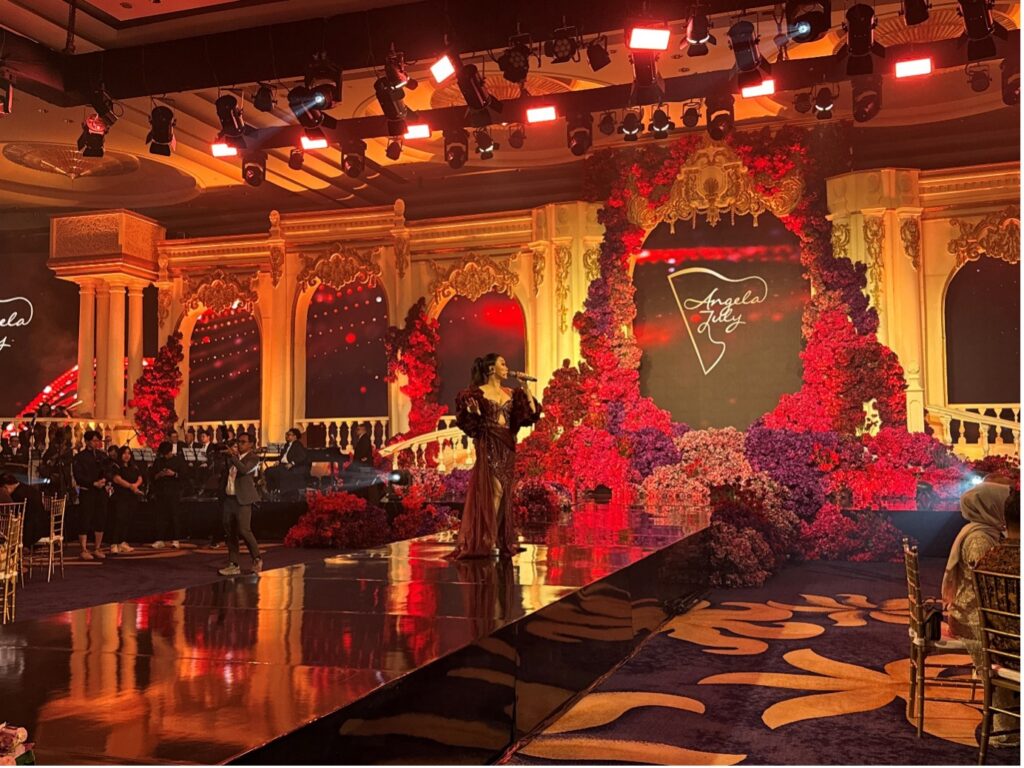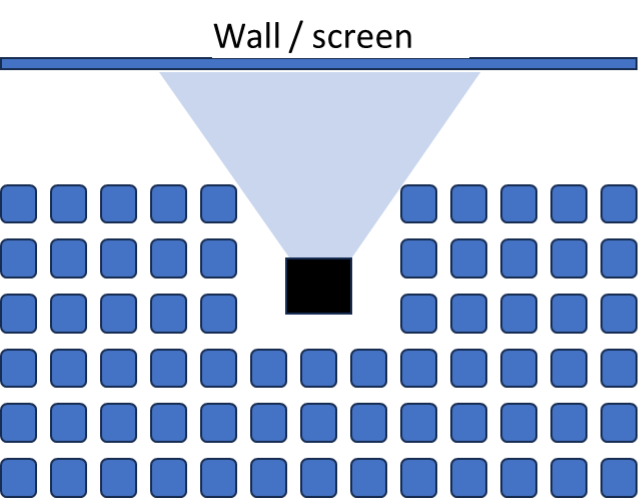
Notice the difference between the projector image (left) and the LED image (right) in terms of color saturation, vibrancy and brightness in a bright setting.
When planning for events that require image projection, organisers are generally faced with a decision to either use a projector or and LED display. They each have their own pros and cons, and in this article, we try to breakdown the comparison between the two in order for the reader to make an informed decision.
Image Quality: A Clear Contest When it comes to image quality, both projectors and LED displays bring their A-game, but in different ways. High-end projectors can render stunning, sharp images, leveraging technologies such as LCD, DLP, and LCoS. However, their Achilles’ heel remains ambient light interference, which can dampen image vibrancy.
On the other hand, LED displays shine brightest—literally. Known for their high brightness, contrast, and color accuracy, they provide exceptional image quality, even in well-lit environments. For those who prioritize impeccable visuals, LED displays are often the go-to choice.
Brightness: Lumens vs. Nits The term “brightness” varies significantly between these two technologies. Projectors measure brightness in lumens. While some high-lumen models perform well in daylight, most are defeated by bright surroundings. LED displays, however, tout high brightness levels measured in nits, maintaining their brilliance regardless of ambient light conditions. This characteristic makes LED displays ideal for spaces with variable lighting.

The LED display (middle) shines in a bright setting and size of image. Without it, the room would have to be darkened for the projector image to be clearly visible.
Size and Scalability: The Bigger Picture Both projectors and LED displays cater to large-scale visuals, but they achieve this differently. Projectors can cast enormous images without bulky hardware, making them cost-effective for expansive displays. However, the larger the image, the more powerful—and expensive—the projector needs to be. Or else, the image risks being washed-out.
LED displays, by contrast, are modular. They can be assembled from multiple panels into vast screens, retaining exceptional image quality no matter the size. This scalability gives LED displays an edge in large venues and dynamic digital signage.

Here the LED display demonstrates its customisability for enormous displays and versatility to be combined seamlessly with physical decorations.
Installation and Space: Room to Grow Installation considerations are pivotal. Projectors necessitate substantial space to project images onto screens, demanding precise alignment and regular maintenance. They also require an unobstructed line of sight from the projector to the screen. Small rooms or cluttered spaces might pose challenges. This is made even more difficult in venues where there aren’t any fixed overhead projectors installed and a portable one has to be brought in and take up the limited floor space.
Conversely, LED displays where fixed installations or rental units are compact and can be wall-mounted or butted up against a wall, saving valuable floor space. They also have the added benefit of minimal maintenance, making them a practical choice for long-term installations.

The floor standing projector system requires floor space for the projector as well as an unobstructed line of sight from the projector to the screen. LED displays do not have this limitation as the image is generated on and projected from the LED screen itself
Cost: Initial Outlay vs. Long-term Investment Upfront costs is usually the main advantage of a projector over an LED screen. Projectors generally come with a lower price tag, but beware—ongoing costs like lamp replacements can add up over time. LED displays demand a higher initial investment, but their long-term cost-effectiveness shines through with lower maintenance and energy consumption – all the while enhancing the event visual experience.
As such, the user should take into consideration not only the upfront cost of the installation, but more importantly whether the visual and thus, overall experience of the event attendees justifies the cost of using LED displays. In a lot of cases, the answer is yes.
Lifespan and Maintenance: Durability Matters Lifespan is another crucial consideration. Traditional projectors have lamp lives ranging from 2,000-5,000 hours, while LED and laser projectors offer extended lifespans with some maintenance required. In contrast, LED displays often exceed 50,000 hours of use and demand minimal upkeep, appealing to those seeking durability and reliability. And with our enhanced warranty duration, the user can have peace of mind when buying and installation from us.
Final Thoughts In the grand scheme, both projectors and LED displays have their unique advantages. Projectors offer cost-effective in controlled lighting environments, while LED displays dominate with superior brightness, image quality, and adaptability in diverse lighting scenarios.
Ultimately, your choice hinges on specific needs, from space and budget to the desired visual impact. Weighing these factors will illuminate the best path forward in this visually driven world.
Feel free to reach out if you need more insights or have specific questions about our LED offerings!